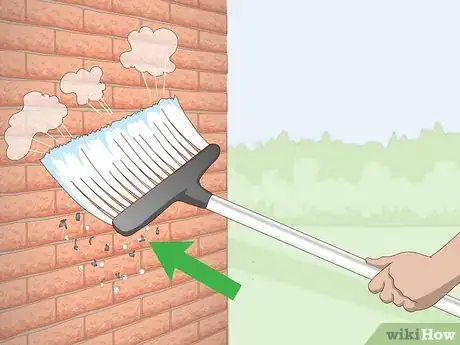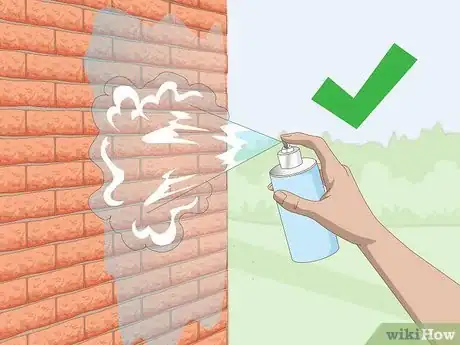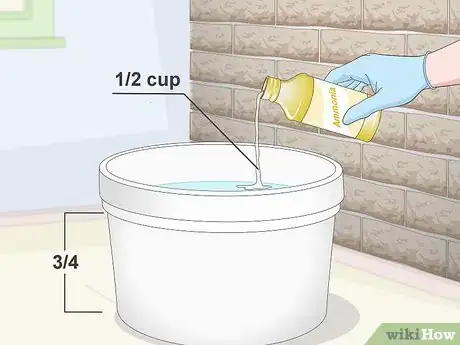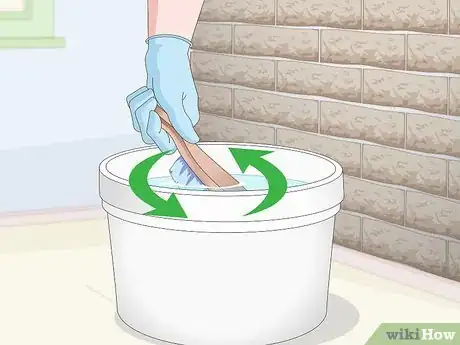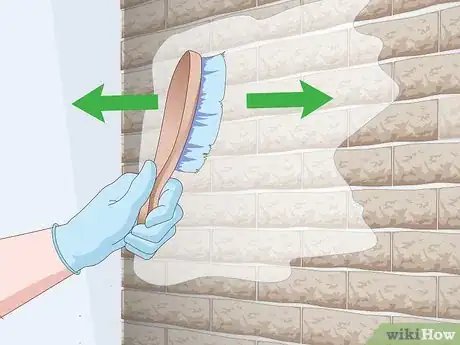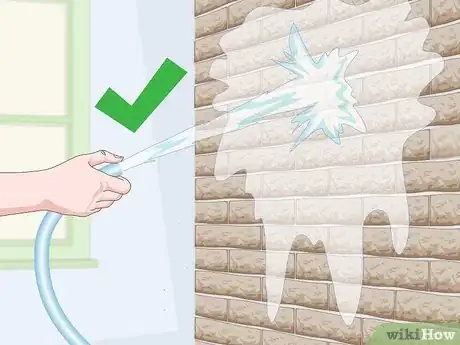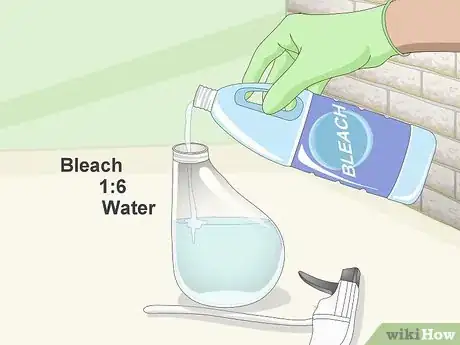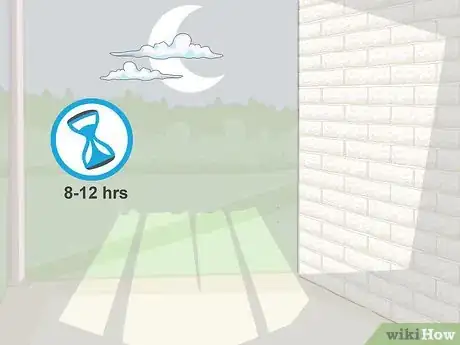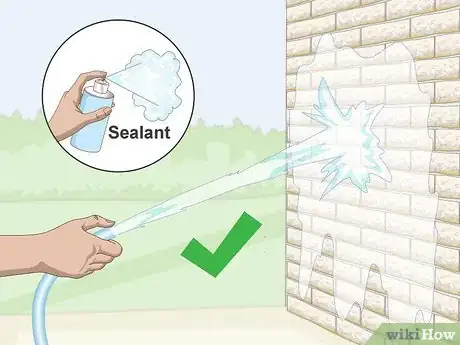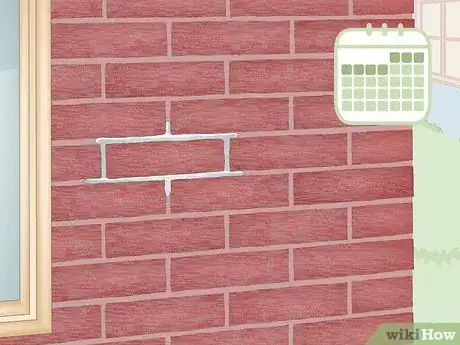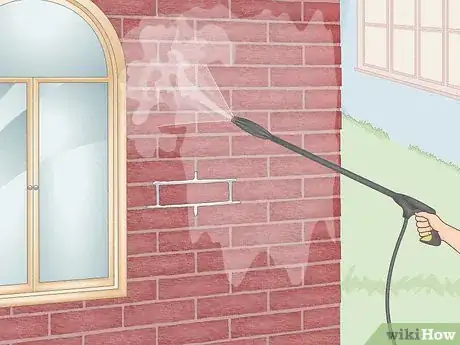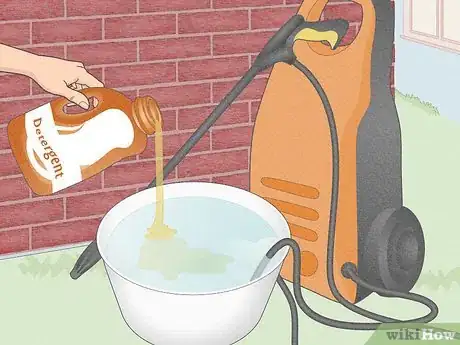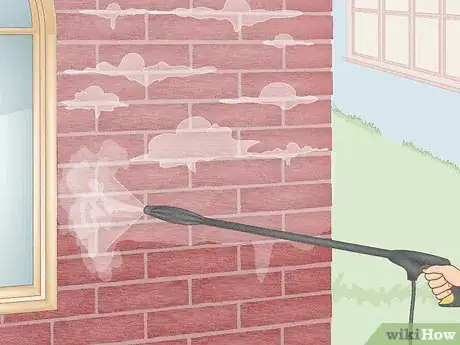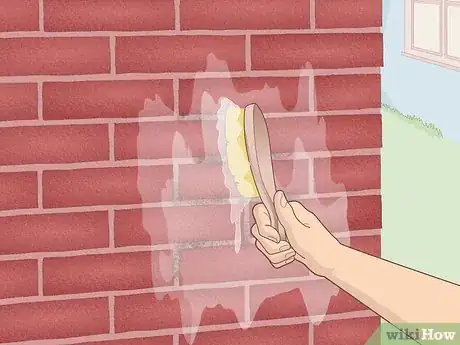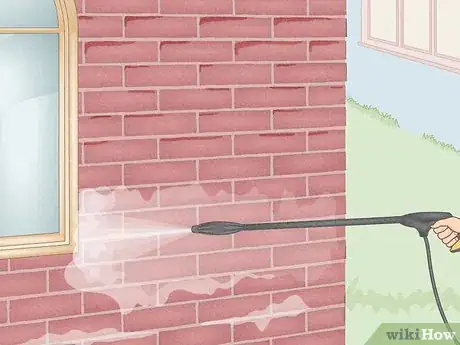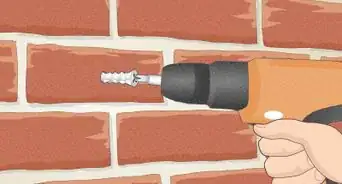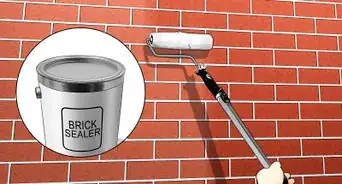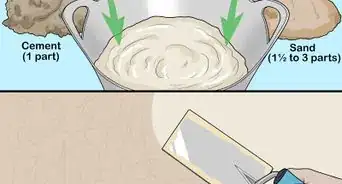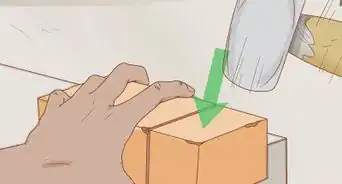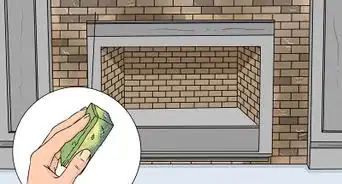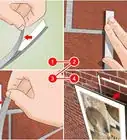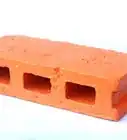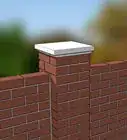This article was co-authored by Michelle Driscoll, MPH. Michelle Driscoll is the Owner of Mulberry Maids, which is based in Fort Collins, Colorado. With five years of experience, her business specializes in cleaning homes and small offices. She holds a Masters in Public Health from the Colorado School of Public Health. Additionally, Mulberry Maids has an A+ rating from the Better Business Bureau.
This article has been viewed 41,778 times.
Over time, your interior and exterior brick walls can begin to collect dirt, mold, and debris, affecting their appearance. Fortunately, keeping brick looking its best doesn't have to be a hassle. Aside from an occasional dusting, you should aim to scrub and spray interior or exterior brick walls roughly once a year to remove unsightly buildup, and use more focused manual cleaning methods to deal with moss and mold growth. This article will walk you through an easy brick-cleaning routine using brushes, DIY sprays, and an optional pressure washer.
Steps
Performing Basic Maintenance
-
1Brush the wall with a broom. Use the bristles of the broom to dislodge loose dust, dirt, cobwebs and other debris that’s built up on the surface of the brick. Be sure to reach up to the top of the wall and into any corners or crevices that might be hiding dirt.
- Brush horizontally away from yourself rather than straight down to keep from covering yourself in dust.
- An occasional sweeping will usually be enough to keep brick walls looking good between more detailed cleanings.
-
2Hose down the wall from top to bottom. Turn the hose on full blast and spray off any remaining dirt. Work from one end of the wall to the other, top to bottom, to avoid spreading dirt around. Once the wall dries, it will regain its original quality of finish.[1]
- Cover the nozzle of the hose partially with one thumb to get more out of your water pressure.
- Wipe the wall with a sponge while it’s still wet to clear away hard water stains and mineral deposits.
Advertisement -
3Treat weathered brick with a special sealant. If your brick wall is crumbling or shows signs of extensive wear, you can protect it using a clear silane-based sealing product. Brush a thin coating of sealant over the entire wall surface and give it ample time to dry. The sealant will help fill in weak spots, making the brick more resilient to damage and inclement weather conditions.[2]
- Choose a day with clear, dry weather in the forecast to apply brick sealant. Precipitation and humidity can result in less efficient coverage.
- Don’t apply a sealant until the brick is totally clean, or you may end up locking in the dirt for good.
Scrubbing Brick Walls with Ammonia
-
1Combine water and ammonia in a large bucket. Fill the bucket three-quarters of the way full with warm water, then add half a cup of ammonia. The ammonia will help loosen stuck-on dirt and stains, allowing them to be scrubbed away with ease.[3]
- Be sure to take the proper safety precautions when working with ammonia. Pull on a pair of rubber dish gloves and a facemask to protect you from harsh fumes.
-
2Dip a long-handled brush in the ammonia solution. Use the brush head to stir the solution and soak the bristles in preparation for scrubbing. Shake off the excess solution into the bucket.
- Pick a brush with natural or synthetic bristles. Wire brushes can cause scratches when used on brick or leave behind small flakes of metal that will eventually rust.[4]
- Ammonia gives off noxious vapors, so stand clear of the bucket while mixing and dipping.
-
3Scour the dirty areas of the wall. Run the brush across the surface of the wall using short, forceful motions to break down stubborn residue and discoloration. Make sure you scrub the entire wall to prevent anyone section from coming out with a different degree of coloration. Continue scrubbing until the wall is completely clean, adding fresh solution to the brush every so often.[5]
- If you’re having difficulty removing dirt, try scrubbing the spot from different angles.
- You’ll need to apply quite a bit of pressure to penetrate into the cracks and crevices of the brick.
-
4Spray the wall with clean water. Hose off the brick to rinse away all traces of the ammonia solution, along with whatever debris it helped dissolve. Let the wall drip dry. Try to get in the habit of scrubbing exterior walls with ammonia once or twice a year, or more frequently if you live in an area with a lot of dust or rainfall.
- If you have a power washer or a hose with a separate pressure nozzle, you can use it on a low pressure setting to knock out dirt that has settled down deep.[6]
- Ammonia may damage the brick if left to soak into the wall.
Treating Moss and Mold Using Bleach
-
1Mix together water and bleach in a spray bottle. Use approximately 1 part bleach for every 6 parts water to achieve the right concentration. Shake the bottle to make sure the solution is properly mixed. Keep the spray bottle pointed away from your face at all times.
- Caution should be observed when handling bleach. It will be a good idea to wear gloves, a facemask and eye protection to defend against potential splatters.[7]
- Dense buildup caused by moss or mold growth is typically resistant to gentler cleaning methods and will require a more intensive strategy.
-
2Spray the wall with the bleach solution. Apply the mixture liberally to the areas of the wall where moss or mold growth is the thickest. Bleach is a potent disinfectant and is mildly caustic—not only will it kill whatever is growing on the brick, it will also eat away at its hold on the wall.[8]
- Test the bleach solution on an out-of-the-way spot on the wall to confirm that it won’t ruin the appearance of your brick.
- Wet the wall down thoroughly before misting it with bleach. This will prevent the bleach from soaking into the brick, where it can create structural weakness.[9]
- Be careful to avoid inhaling fumes or contacting bleach with your bare skin.
-
3Allow the solution to sit overnight. For best results, give the bleach 8-12 hours to take effect. As it sits on the wall, it will choke the growth of moss or mold and make it easier to remove without the need for a lot of tedious scrubbing.[10]
- The longer you allow the bleach to remain on the wall, the better job it will do of releasing sludgy grime.
-
4Wash off the wall with a hose. Once it’s been treated with bleach, the moss and mold should simply rinse off under a forceful stream of water. Pick off any remaining bits by hand using a plastic spatula or scraper, then rinse again. Allow the wall to dry and apply a silane-based sealant to safeguard against future growth if desired.[11]
- Dust and spray your brick wall regularly after deep-cleaning it with bleach to keep moss and mold from returning.
Using a Pressure Washer
-
1Wait for 7 days after making repairs to use a pressure washer. If your wall has any cracks or chips in the mortar, repair it first, and then wait for 7 days to use a pressure washer on it. This will help to ensure that you do not damage the repairs you just made.[12]
- Do not wait more than 30 days after making repairs to a wall to clean it. By this time, the stains and dirt will be harder to remove.
-
2Spray the wall with a low-pressure hose to saturate it. Spray the wall all over to saturate it with water. The maximum pressure of your hose should not be above 700 psi. Too much pressure may damage the brick wall, especially if you recently repaired it.[13]
-
3Add detergent according to the manufacturer’s instructions. Use a brick-safe detergent in your pressure washer. Check your pressure washer’s instruction manual to find out how to properly add the detergent.
- In some cases, you may be able to apply the solution directly to the wall without diluting it. Check the instruction manual to be sure.
-
4Spray on the detergent solution and leave it on for up to 15 minutes. Saturate the wall again using the detergent solution in your pressure washer. Use a side-to-side sweeping motion to fully saturate the brick wall. Let the detergent sit on the wall for up to 15 minutes before rinsing it off, but don’t let the detergent dry on the wall.[14]
- Make sure to keep the pressure washer on low pressure while you do this.
-
5Spot clean any tough stains with a scrub brush. If you notice and tough stains or grimy spots on the wall after saturating it with the detergent, use a scrub brush to work on them. Apply medium pressure to the brush and rub it back and forth over the stain.
- You may need to apply a little extra detergent solution to these areas to make it easier to remove the dirt.
-
6Rinse the detergent and dirt off of the wall. After time is up and you have spot cleaned the wall, spray the wall with water. Start spraying at the top and move downwards. Make sure to remove all of the detergent. Go over the wall several times to ensure that the detergent is all gone.
- You may want to focus on a small area at a time rather than spraying the wall all over.[15]
Warnings
- Powerful acids like muriatic acid are often recommended for cleaning brick, but these can cause stains and accelerate wear on older walls. As such, they shouldn’t be your first choice for basic cleaning jobs.⧼thumbs_response⧽
- Brick that shows a great amount of cracking or crumbling will most likely need to resurface.⧼thumbs_response⧽
Things You'll Need
- Broom
- Stiff-bristled brush with a long handle
- Water hose
- Ammonia
- Chlorine bleach
- Large bucket
- Spray bottle
- Rubber gloves, facemask and eye protection
- Power washer (optional)
References
- ↑ http://www.housecleaningcentral.com/en/cleaning-tips/tip/cleaning-brick.html
- ↑ https://www.familyhandyman.com/cleaning/how-to-clean-brick/view-all#step1
- ↑ http://www.howtocleanstuff.net/how-to-clean-exterior-brick/
- ↑ https://www.bobvila.com/articles/370-brick-basics-maintenance-care-and-cleaning/#.WNqagvnyvIU
- ↑ http://www.housecleaningcentral.com/en/cleaning-tips/tip/cleaning-brick.html
- ↑ http://www.housecleaningcentral.com/en/cleaning-tips/tip/cleaning-brick.html
- ↑ http://www.howtocleanstuff.net/how-to-clean-exterior-brick/
- ↑ http://www.howtocleanstuff.net/how-to-clean-exterior-brick/
- ↑ https://www.bobvila.com/articles/370-brick-basics-maintenance-care-and-cleaning/#.WNqagvnyvIU
- ↑ http://www.housecleaningcentral.com/en/cleaning-tips/tip/cleaning-brick.html
- ↑ http://www.howtocleanstuff.net/how-to-clean-exterior-brick/
- ↑ https://www.meridianbrick.com/wp-content/uploads/2017/07/1A-_Cleaning-Procedures-for-New-Brickwork_7.17.pdf
- ↑ https://www.meridianbrick.com/wp-content/uploads/2017/07/1A-_Cleaning-Procedures-for-New-Brickwork_7.17.pdf
- ↑ https://www.meridianbrick.com/wp-content/uploads/2017/07/1A-_Cleaning-Procedures-for-New-Brickwork_7.17.pdf
- ↑ https://www.meridianbrick.com/wp-content/uploads/2017/07/1A-_Cleaning-Procedures-for-New-Brickwork_7.17.pdf
About This Article
To clean a brick wall, start by brushing the walls with a broom to dislodge dust, dirt and debris. Make sure to reach all the way to the top, and into any corners or crevices. Then, turn the water hose on full blast and hose off any remaining dirt. To avoid spreading dirt around, work from one end of the wall to the other. Finally, wipe the wall with a sponge while it’s still wet to remove any hard water stains or deposits. For more advice, including how to use bleach to treat mold and moss on your brick wall, keep reading.
